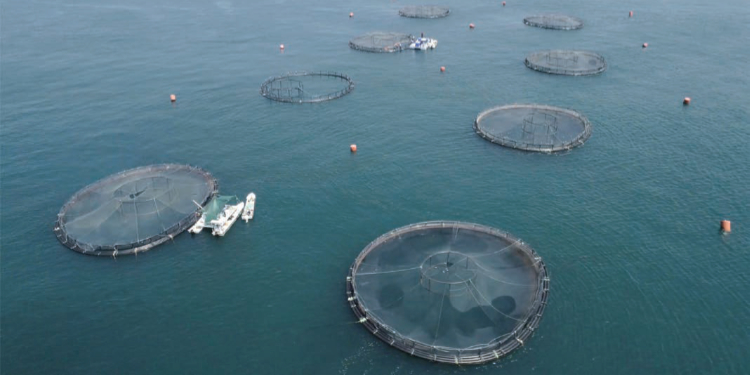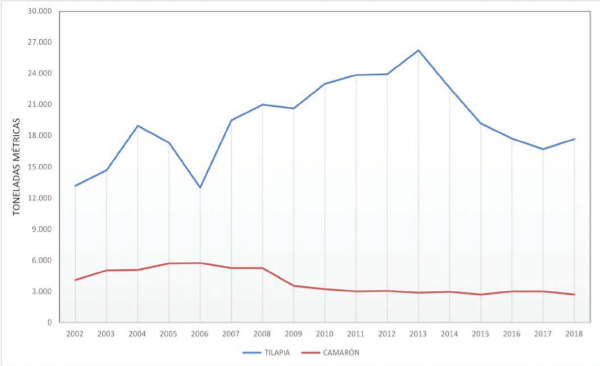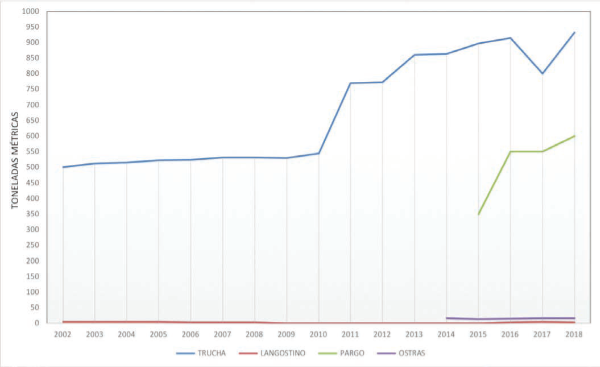Indonesia: Emerging as a Leader in Aquaculture
EDITOR’S NOTE: As you’ll note on page 6 of this issue, ASIAN PACIFIC AQUACULTURE 2024 will be held i...

Costa Rica may be a small country in land area (51,000 km2) but it has abundant freshwater resources from its mountain ranges, a tropical climate, and a marine exclusive economic zone of almost 600,000 km2 that make the country suitable for aquaculture development. Freshwater aquaculture began in the 1960s with the objective of promoting socio-economic development in rural areas by adopting technologies to produce introduced tilapia species Oreochromis mossambicus and Sarotherodon melanopleura (FAO 2016). In the decades that followed, experimental culture of rainbow trout Oncorhynchus mykiss and freshwater prawn Macrobrachium rosenbergii was conducted (Galvez and Guenther 1987). Marine aquaculture began in the 1970s with the cultivation of the shrimps Litopenaeus vannamei, L. stylirostris and L. occidentales (FAO 2016, Nanne 1986). In the 1990s, seed production and the culture of the Pacific oyster Crassostrea gigas and the first investigations with spotted rose snapper Lutjanus guttatus were initiated (Arias et al. 1998, Gutiérrez-Vargas and Durán-Delgado 1999).
According to the Costa Rican Institute of Fisheries and Aquaculture (INCOPESCA), national aquaculture production by species in 2018 was 80 percent tilapia (16,667 t), 13 percent marine shrimp (2,689 t), 4 percent rainbow trout (827 t), and 3 percent snapper (600 t) (Figs. 1 and 2; INCOPESCA 2019). The production of oysters and freshwater prawns occurs, but only at a small scale, generating around 16.5 and 4 t, respectively (INCOPESCA 2019). About 76 percent of total tilapia production corresponds to production by Acuacorporación Internacional S.A., located near Cañas, Guanacaste Province.
Between 2013 and 2017 tilapia production decreased in response to the increase in imports of fish (tilapia and pangasius catfish) from Asia. However, during 2018, production increased by almost 1,000 t in relation to 2017 as a result of an increase in exports.
With respect to shrimp farming, production declined by about 50 percent between 2009 and 2015, associated with the presence of diseases, the low level of technification of producers, environmental policies, local trade and the competition of national product abroad. Shrimp produced in Costa Rica has managed to position itself in the European market as a certified organic product, leading to a gradual increase in production.
Rainbow trout, freshwater prawn, snapper and oysters have diversified aquaculture production in Costa Rica (Fig. 2). Trout production has increased from less than 550 t in 2010 to 932 t in 2018. Exports of this premium product have been vital for the development of this aquaculture sector. Another product with great potential has been snapper, which has shown an accelerated production, increasing from 350 t in 2015 to 600 t by 2018.
Freshwater prawn has been produced on a small scale for local or family consumption since 2002. Until 2018 there has been no exponential development of the species, although the interest is maintained and the environmental conditions of the country are optimal for its cultivation. Since 2014, oyster production has been maintained without exceeding 16 t/yr but its potential is widely known and it is expected for the next few years that the number of farms dedicated to oyster aquaculture will double or triple.
There are 287 aquaculture producers in Costa Rica, generating around 2,005 direct jobs, 69 percent of these in tilapia farming. In addition, fishing and aquaculture contribute 0.10 percent of GDP, 7.1 percent of the national livestock production and an average of 1.6 percent of the country’s exports (Beltran 2014, FAO 2016).
National fish consumption per capita is 10.4 kg/yr, but most of the national aquaculture production in 2018 was exported to the USA and Europe; therefore, it is necessary to import fish (tilapia and pangasius) to cover domestic demand. This deficit presents opportunities for new investments in the national aquaculture sector.


TOP, FIGURE 1. Annual production of the two main aquaculture crops in Costa Rica from 2002 to 2018. Source: INCOPESCA, personal communication, 2019.
BOTTOM, FIGURE 2. TAnnual production of emerging species in Costa Rica between 2002 and 2018. Source: INCOPESCA, personal communication, 2019.
Tilapia is one of the most important aquaculture species in the country, with industrial, médium- and small-scale producers (Sánchez and Cambronero 2016). Among the species used in Costa Rica are blue tilapia Oreochromis aureus (Fig. 3) and Nile tilapia Oreochromis niloticus. It is marketed as whole fish, fresh and thawed fillets or in pancitas. Fillets can reach 20 cm and weigh approximately 150 g, while whole fish is marketed from 500-600 g (Sánchez and Cambronero 2016). In recent years, tilapia consumption has increased and the product can be found in fish markets, supermarkets, fairs, restaurants and in recreational fishing ponds.
The ACI Group is the largest company in the country that is dedicated to the production, processing and marketing of tilapia (Fig. 4). It is owned by Aquacorporación Internacional and has around 600 ha of intensive production ponds (Fig. 5) and the Terrapez processing plant that produces fresh fillets and other derivatives.
The introduction of rainbow trout to Costa Rica occurred in 1927, with significant production occurring since 1968. The Ministry of Agriculture and Livestock promoted the creation of the research and production center Truchícola Ojo de Agua de Dota to supply seed (Fig. 6) and promote development of the activity (Alvarado 2002). At present all fingerling production is derived from imported eggs (INCOPESCA 2019). In intensive cultivation of rainbow trout, all phases of production are developed, starting with extraction and collection of eggs and sperm, fertilization, incubation, nursery, all stages of development and fattening (Vargas 2003).
A market approach that has boosted development of trout farming has been direct sale to the public, where people visit farms and catch trout directly. Trout are presented in several forms that are used for national consumption and exports, including whole, split whole, fillet without packing and vacuum packed, smoked whole and smoked fillet vacuum packed (Alvarado 2002). The largest trout producer in Central America is Truchas Reales de Costa Rica S.A., with more than 25 years of experience and a processing plant. Their trout products have national and international quality certifications.
The cultivation of freshwater prawn (Fig. 7) is done at a small scale and small production systems are distributed throughout the country, with the northern and southern areas being the main production areas. Currently, two hatcheries are responsible for supplying all national producers with seed. Some studies have indicated the aquaculture potential of endemic freshwater prawn species M. panamense, M. americanum and M. tenellum (Gutiérrez 2009).
Read the rest of this article in the June 2019 issue of World Aquaculture Magazine here